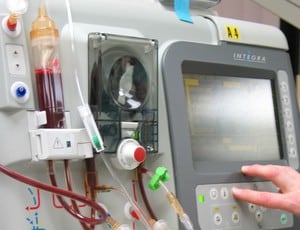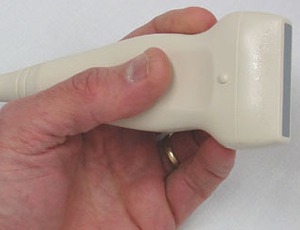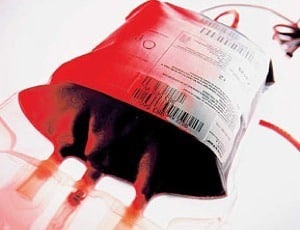CLABSI treatment protocol in pediatrics

“A collaborative, multidiscipline-supported protocol for the care of patients with IF presenting to the ED enhances efficiency of antibiotic ordering/administration, as well as reduces the number of unplanned floor-ICU transfers” Graham et al (2021).
Antimicrobial-impregnated CVC in pediatric patients

“There is an urgent need for large-scale RCTs focusing on different antimicrobial-impregnated catheters in these patients to further enhance current evidence” Lai and Yue (2021).
Reducing rejected laboratory samples – Full Text

“Using a quality improvement approach for the detailed analyses of specimen rejection rates and related issues helped to formulate efficient plans to target this issue” Gupta et al (2021).
Home hemodialysis for older people

“The development of an assisted HHD care delivery model and advancement of telehealth and technology in provision of HHD care may increase accessibility of HHD services for older patients” Wu et al (2021).
Predicting CRBSI in hemodialysis patients

“Prolonged catheter duration, low serum albumin, and high mean platelet volume independently predict the development of CRBSI in patients undergoing hemodialysis for acute kidney injury or chronic kidney disease” Demirci et al (2021).
Regulation of fluid and electrolyte balance

“Disorders in sodium balance with consequent effect on osmolality come about mainly due to disturbances in water homeostasis rather than an abnormality of sodium intake or excretion” Essa and Mcnab (2021).
ECG for PICC tip positioning

“The application of ECGs in PICC tip positioning can improve the accuracy of catheter tip positioning and reduce the incidence of related complications” Yu et al (2021).
Inadvertent arterial puncture during CVC placement – Full Text

” Utilization of real-time ultrasound guidance via the subclavian approach could have allowed for direct visualization of needle insertion to the anatomical structures, guidewire location, and directionality, all of which can lead to decreased complications and improved cannulation success compared with the landmark technique” Alon (2021).
PICC associated infection and inflammatory markers

“This study aimed to investigate the relationship between serum amyloid protein A (SAA), procalcitonin (PCT), C-reactive protein (CRP), and PICC infection in patients with malignant tumor” Chen et al (2021).
Mortality of hemodialysis patients with COVID-19

“Hemodialysis patients using a CVC as the vascular access, aside from diabetic and elderly ones, should be closely monitored due to their high risk of death in the course of the COVID-19” Lugon et al (2021).
Virtual reality during venipuncture

“Longer procedure times associated with VR use during venipunctures (4-6 minutes on average) may be attributed to pauses to troubleshoot VR games not tailored for medical procedures” Canares et al (2021).
Breast cancer and PICC placement

“The aim of this retrospective study was to determine the risk for development of BCRL in ipsilateral arm IV placement compared to contralateral arm IV placement to prior breast cancer surgery” Naranjo et al (2021).
Ultrasound-guided subclavian vein cannulation – Full Text

“In this article, we discuss the indications, contraindications and complications associated with subclavian vein cannulation, and present an ultrasound-guided approach to infraclavicular subclavian cannulation” Davies et al (2021).
INICC report found 7785 CLABSI

“Pooled CLAB rate was 5.30/1,000 CL-days; VAE rate was 11.47/1,000 MV-days, and CAUTI rate was 3.16/1,000 UC-days” Rosenthal et al (2021).
Skill decline after CVC insertion simulation training

“While there was some evidence of skill retention after simulation, overall most studies demonstrated skill decline over time” Legoux et al (2021).
Intramuscular injection pain reduction

“As a result of the meta-analysis, it was found that ShotBlocker application in IM injection in adult patients reduced patients’ pain intensity” Şahan and Yildiz (2021).
Why do peripheral IV catheters fail

“We aim to identify ultrasonographic factors that predict impending PIVC failure prior to clinical exam” Bahl et al (2021).
Implantable port placement technique – Full Text

“The aim of this work was to review different techniques of placing TIVAD implants to evaluate the aetiology of immediate complications” Toro et al (2021).
Neonatal PICC placement and prevention of hypothermia

“This quality improvement project’s goal was to reduce the hypothermia rate in very low birth-weight (VLBW) neonates by replacing cloth blanket/towels with a plastic drape during PICC placement” Phan and McIntyre (2021).
IM injection online education

“Web-based education and Kahoot usages in the evaluation showed positive effects on nursing students’ intramuscular injection knowledge and skills” Öz and Ordu (2021).
Thrombolytic therapy for tunnelled catheter dysfunction

“The success of thrombolysis in subsequent de novo THC thrombosis decreases in patients who previously required intraluminal thrombolytic administration” Selçuk et al (2021).
Subcutaneous PICC securement device outcomes

“In this retrospective analysis, subcutaneously anchored securement of PICCs was a safe and effective strategy for reducing the risk of dislodgment” Brescia et al (2021).
Extravasation case study with pictures – Full Text

“Grade 4 peripheral intravenous infiltration with skin tears has seldom been reported” Wang et al (2021).
Chlorhexidine allergy related to medical products

“Severe cases were managed with intravenous fluids, steroids, and epinephrine (adrenaline). None of the reported cases were fatal” Gerges et al (2021).
Likelihood of transfusion associated HBV infection

“It is estimated that at least 13 potentially infectious donations from donors with OBI remain undetected annually, equating to an overall residual transmission risk of 3.1 per million donations using our current screening strategy of HBsAg screening with HBV nucleic acid testing (NAT) in pools of 24” Harvala et al (2021).
Fluid intake and output monitoring

“Overall, documentation accuracy of the intake and output charts was 77%, with 100% accuracy in the oral and intravenous fluid intake, and 21% accuracy in the output documentation” Lim et al (2021).
Peripheral IV catheter management in childbirth

“Regular use of a large-gauge catheter is counter intuitive when placed in the small veins of the hand with extension tubing. More research is needed to promote best practice around gauge selection, site and women’s experience” Kearney et al (2021).
Neonatal blood culture contamination – Full Text

“This study describes a 12-month quality improvement (QI) program to reduce the BCC rate in a neonatal unit by 50%” Allen et al (2021).
Implantable port to support electroconvulsive therapy

“The placement of a totally implantable venous-access device (TIVAD) could be an alternative to overcome these difficulties in certain subjects” Macau et al (2021).
Needlefree connector IV extension set incident

“We experienced complete failure of a needle-free connector extension set with a Luer-access split septum device in multiple patients due to the split septum remaining fused and essentially unsplit despite being connected on both ends” Naftalovich et al (2021).

